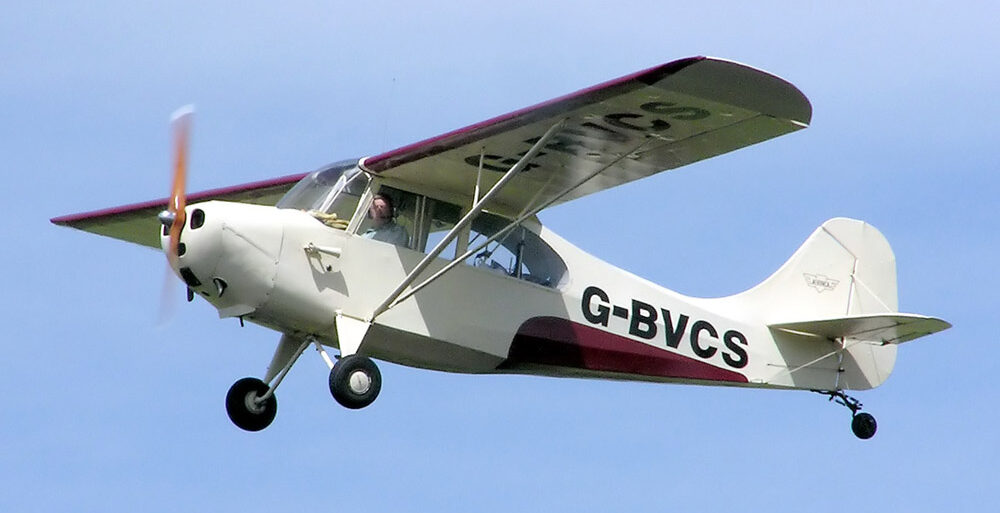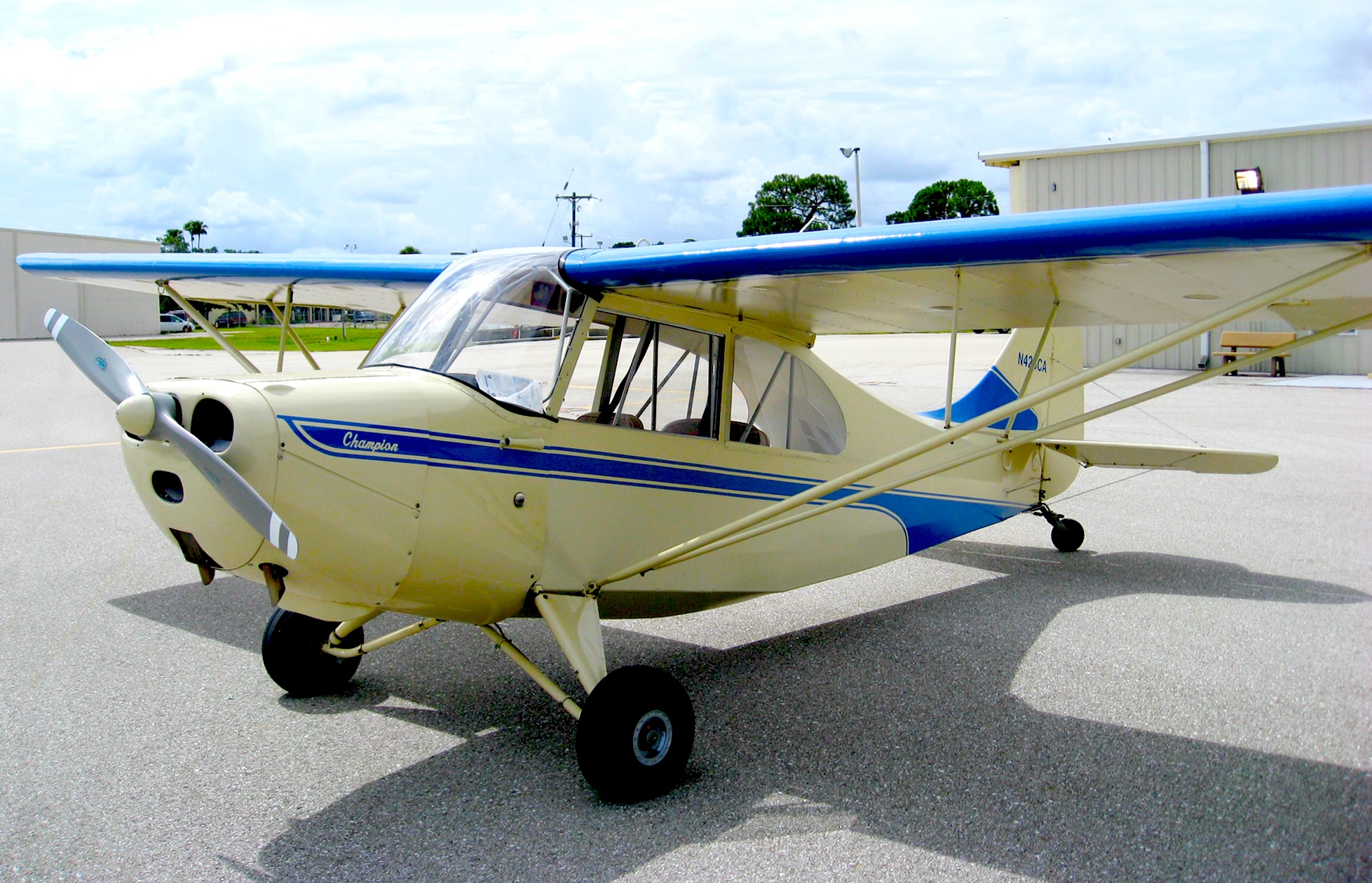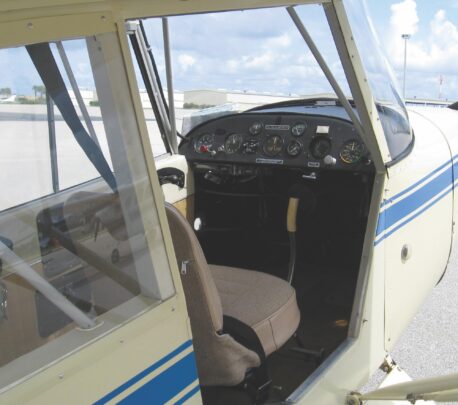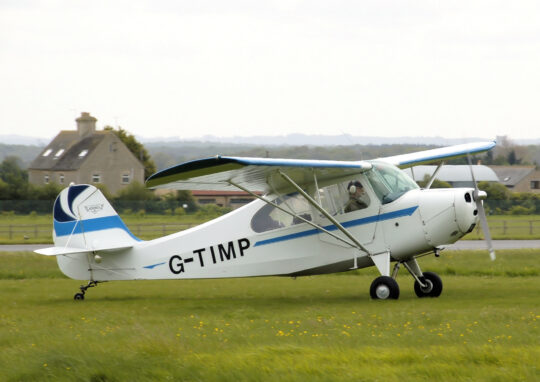
(Photo: Arpingstone – Own work, Public Domain, https://commons.wikimedia.org/w/index.php?curid=238354)
The Aeronca Champion might be the Rodney Dangerfield of light aircraft. The plane, which has historically played second fiddle to the Piper Cub, doesn’t get the respect it deserves, according to its fans. “Take all the light planes from that era and look at which offers the best characteristics… I would place the Champ at the top,” argues John Weigel, a Boston area pilot who twice flew a Champ from coast to coast. “I love the Cub,” he says, “but the Champ has no bad qualities. And if I’m taking someone up with me, I’ll take it over other similar planes every time.”
When compared to the Cub, as well as the Luscombe, Taylorcraft and Cessna 120 and 140, among other tailwheelers, the Champ is easier to get into, offers more comfort, has better visibility, more forgiving landing gear and is probably the better training/low-time pilot aircraft. All are good reasons to consider a Champ if you’re looking for a simple, relatively inexpensive and fun to fly aircraft.
Development

Aeronca sold the design to Champion Aircraft in 1954. Champion made a few variants of the plane and later used elements of the design to produce the Citabria. Bellanca Aircraft purchased Champion in 1970, but sold very few Champs before it ceased production in the early 1980s. American Champion Aircraft Corporation acquired the design in 1989, and with the creation of the Sport category around 2007 came out with a model specifically for Sport Pilots. The plane was dropped from production in 2019.
Features & Flight Characteristics

Specifications for all the Champ variants are readily available online, but the original 7AC had a cruise speed of around 85 mph (95 mph max.) with climb rate of 370 fpm, 38 mph stall, 1220 pounds gross weight with a 480 pounds payload, and a 13 gallon fuel tank. The 7EC might be the cream of the early crop of Champs. With its 85hp engine, electric starter (No more hand propping!), long-throw oleo strut main gear, nicer interior and increased gross weight (1350 pounds compared to the AC’s 1220 pounds) the model is the perfect example of a vintage flier, according to Tabor Coates, a flight instructor in the Boston area and a former Champ owner.
“The AC’s 65 hp engine is a little small for two people, so the EC’s larger engine makes a significant difference in climb in warmer weather,” details Tabor. “The Champ’s a well-mannered plane, and it’s very forgiving to land with its so-called ‘no bounce landing gear.’ The plane is heavier in roll compared to a Cub, and you must use the rudder because of adverse yaw, but it flys well. It’s large enough that almost anyone can easily get inside for a ride, and it can usually be found at a much better price than a Cub,” he adds.
Both Coates and Weigel praise the plane’s gentle stall characteristics and the panoramic view it offers occupants. They call it a perfect $100 hamburger machine. Unlike the Cub, a Champ is piloted from the front seat when flown solo. This means you don’t have to serpentine while taxiing since you can see over the cowl. The plane doesn’t have flaps, so descents can require slipping. Inside, the plane’s avionics are minimal, but the seats are comfortable and there’s plenty of elbow room.
Prebuy, Inspection, Maintenance & Ownership
Anyone buying a Champ should have a pre-buy inspection performed by an A&P who’s familiar with older aircraft, according to Coates and Weigel. The condition of the wooden wing spars should be carefully checked, as should the nails holding the ribs to the spar. Champs were often used to train pilots and some were subjected to harsh landings. The fabric covering should also be checked, especially if the plane has been left outside for any duration. Weigel says you could easily spend more having a Champ recovered than what you paid for it.
“A lot of Champs were modified over the years and sometimes the paperwork wasn’t done correctly,” warns Weigel. “Get the Type Certificate Data Sheet (TCDS) on the plane, carefully review the plane’s logs to double check that Airworthiness Directives [ADs] have been followed and to make sure everything is as it should be.” This is especially true for Champs that had aftermarket starters and battery systems added. Unlike today’s Sport Planes which only need to meet ASTM standards, the Champ is a ‘certified’ aircraft. That means ADs are enforceable FAA regulations that must be followed and documented. Weigel says there are a number of STCs (Supplemental Type Certificates) available which allow for a wide range of modifications to the Champ. While some owners replaced the plane’s original heel-activated brakes with toe brakes, Weigel suggest keeping the originals and getting used to them. “You only need brakes for taxiing,” he explains. “It’s too easy to accidentally hit toe-brakes while using the rudder pedals for take-off and landing rolls—something you absolutely have to do—and that’s not a good thing with a taildragger.”

(Photo: Arpingstone – Own work, Public Domain, https://commons.wikimedia.org/w/index.php?curid=6866179)
Given that Champs can be significantly older than their pilots, you’re likely to run into age-related airframe and powerplant costs down the road. Owners say this shouldn’t be too big a problem as the planes were well built, parts aren’t too hard to find and the aircraft has proven its durability over time. An easy way to put off one expense as long as possible is to keep the plane indoors to extend the lifetime of the fabric covering.
Buying a Champ allows you to join a community of loyal owners: There’s the National Aeronca Association, Champ fly-ins, and EAA and Facebook interest groups and online forums dedicated to the plane. The plane’s such a hit that there are even multiple RC versions available to fly, and you can even fly it virtually with both Microsoft and X-Plane flight simulators.
Dick Hall, another pilot from the Boston area, bought a Champ as his first airplane. He flew it for several years, eventually adding a starter, lights and panel mounted radio and transponder to the plane. “Even with the upgrades it still wasn’t a modern plane, but it was so much fun to fly,” he says. “The thing about the Champ is that it maintains the original spirit of aviation no matter what you do with it or to it…it’s just the ultimate in simplicity with a heritage.”


I love to have my husband ride in this. He did when he was a kid. Now going to be 63 on June 18, 2025 and this be a wonderful surprise for his birthday. Any flyer interested? How much?
Just bought a Champ with 2 friends absolutely love it
Excellent article. Would like to see more like this about older certified planes elligible for light sport
Thanks
Thank you. It was a fun piece to do on such a classic aircraft. We’re doing a whole series on used Light Sports… so keep coming back!